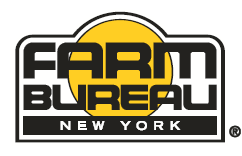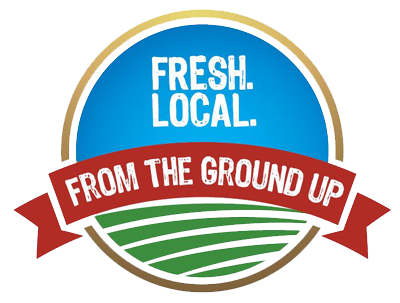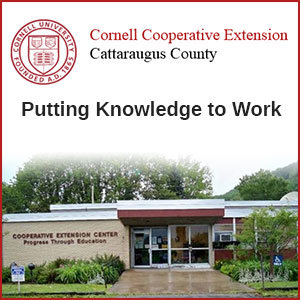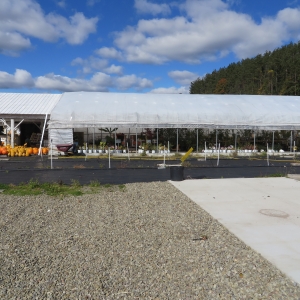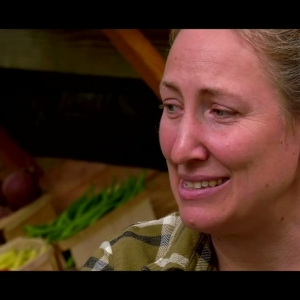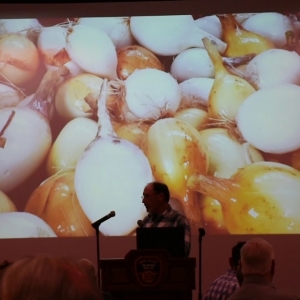Other Ag News:
On July 24, 2025, US Secretary of Agriculture Brooke Rollins released memorandum SM-1078-015 announcing a proposed reorganization of the US Department of Agriculture (USDA). The proposal was drafted without consultation with farmers or other key stakeholders. Since the beginning of 2025, the agency has already lost more than 20,000 employees, and if implemented, the restructuring could trigger thousands more departures.
In response to a public outcry, USDA opened an ad hoc opportunity for feedback on the proposal. NSAC is encouraging farmers, advocates, and organizations to submit their perspectives on the proposed reorganization to reorganization@usda.gov by September 30, 2025. Still, NSAC remains seriously concerned that USDA has bypassed the standard practice of issuing a Federal Register notice to formally solicit public input on a change of this scale.
This post is the fourth installment in our series examining USDA’s staffing crisis and the ripple effects of the proposed reorganization. Here, we highlight staffing declines within the Farm Service Agency (FSA), where staff reductions threaten to undermine the agency’s ability to administer farm safety net programs, deliver disaster assistance, and provide critical support to farmers across the country. Our earlier posts looked first at overall USDA and state-level staff losses, the implications for the Department’s research agencies, and the loss of staff at the Natural Resources Conservation Service.
FSA Staff Numbers Have Fallen for Two DecadesThe Farm Service Agency (FSA) administers loans and payments to farmers and landowners, operating through a network of more than 2,000 state and county offices. FSA staff help farmers apply for loans, price support programs, income support, disaster recovery, and a variety of other financial support programs. FSA, quite literally, keeps the money flowing for millions of American farms and ranches.
FSA employees include national, state, and county office staff. About ⅔ of FSA employees are county staff, working directly with farmers and landowners in local offices spread across the country. In 2024, for instance, approximately 7,168 employees were FSA county staff and approximately 3,402 were FSA state or national employees.
Figure 1: FSA Staff in FY2024
*While FSA state and national staff are “typical” federal employees, FSA county staff are technically employees of county or community committees and are not considered federal general service employees by the Office of Personnel Management (OPM). Therefore, there is unfortunately much less information available concerning FSA county staff than concerning FSA state and federal staff.FSA staffing levels have steadily eroded over recent decades. Even before the staff losses sustained during the current administration, the number of federal and state FSA staff declined by 43% between fiscal year 2005 and the beginning of fiscal year 2025. The number of county FSA staff declined by 22% during the same twenty year period. The National Association of Farmer Elected Committees recently sounded the alarm that there are now fewer than 6,000 FSA county office employees nationally, a 34% reduction from 2005 staffing levels.
Figure 2: FSA Staff by Fiscal Year
*FSA state and federal staff numbers come from the Office of Personnel Management; FSA county numbers come from USDA annual budget explanations Accelerated FSA Staffing LossesThe FSA has lost at least 1,200 additional employees just since January 2025. Approximately 499 FSA national and state employees and 674 FSA county employees opted to accept the Deferred Resignation Program (DRP). The DRP encouraged federal employees to resign from their positions in exchange for receiving full pay and benefits through September 2025. Approximately 88 additional FSA state and national employees separated from the agency between January and March 2025, according to OPM. Unfortunately, since FSA county employees are not tracked by OPM, it is unknown how many FSA county employees also separated from the agency during this new administration.
Table 1: Recent FSA Staffing Losses
*FSA state and federal staff numbers come from the Office of Personnel Management; FSA county numbers come from USDA annual budget explanationsAltogether, the FSA is entering the 2025 harvest season with at least 12% fewer staff members than in January 2025 and at least 1,100 employees fewer than at the end of the first Trump Administration. Just as farmers and landowners enter a period projected to be extremely economically challenging, the agency that provides their federal financial support has been gutted. The FSA has struggled to administer payments to farmers under the Supplemental Disaster Relief Program of 2025 and the 2023/2025 disaster relief programs, and is navigating the extensive changes to the federal commodity payment programs that were part of the recently passed budget reconciliation process. In addition, there is a growing recognition that supplemental relief will be needed for producers impacted by tariffs, high input costs, and program cuts. The scale of such assistance, likely to be around $20-30 billion, will require significant FSA support to ensure any program is run effectively and payments reach all producers in need. At a time of extremely high demand, these staffing levels will cause distress for the agency and stakeholders.
Every State Hit With FSA Staff LossesSince two-thirds of FSA employees are county staff, the impact of the DRP and staff separations has been felt in every state across the country. Amongst the FSA federal employees, states lost an average of 17% of their FSA staff to the DRP. Two states, Alaska and Delaware, lost the only federal FSA employees in their state to the DRP. The 674 county FSA employees who left their positions to the DRP were spread across 46 states, with Texas (59 employees), Iowa (37 employees), Georgia (36 employees), and Kansas (33 employees) losing the large number of FSA county staff. The map below shows the number of FSA staff lost in each state since January 2025, including both the staff who accepted the DRP and those who otherwise separated from the agency.
Figure 3: FSA Staff Lost to DRP and Separations
!function(){"use strict";window.addEventListener("message",function(a){if(void 0!==a.data["datawrapper-height"]){var e=document.querySelectorAll("iframe");for(var t in a.data["datawrapper-height"])for(var r,i=0;r=e[i];i++)if(r.contentWindow===a.source){var d=a.data["datawrapper-height"][t]+"px";r.style.height=d}}})}();No state has been spared in the gutting of the FSA staff.
Farming Stakeholders Express Their Distress With Staff CutsRecently, The National Association of Farmer Elected Committees (NAFEC) issued a statement expressing their distress and frustration with existing low FSA staffing levels. NAFEC President Jim Zumbrink said: “NAFEC has County Committee members in every county in the nation and the word we are consistently hearing is our county office staffs are critically understaffed…As such, our staff will find it very difficult to perform the complex work of the new Farm Bill, combined with Disaster programs and ongoing programs, with the speed agriculture producers in America, both expect and desperately need.”
Leaders at NAFEC shared that their local offices will be unable to administer existing safety net programs and the forthcoming changes from budget reconciliation and a potential new farm bill. “The new farm bill is going to require millions of new base acres to be established which is going to take a lot of work. We also know that ongoing programs like the Livestock Forage Program (LFP), critical to our nation’s livestock producers, is a program that takes a lot of staff time to administer,” said Kevin Dale, a retired county executive director from a large beef-producing county in Oklahoma. His Oklahoma county office staff has recently been cut from a staff of four full time employees (including one full-time temporary employee) to just two staff members. With those numbers, he says, “Issuing payments quickly under this program will be impossible, without additional staffing.”
FSA staff are highly skilled with extensive institutional knowledge that is lost with these separations. For instance, staff who separated from the agency between January and March 2025 had an average of 18.6 years of service, according to OPM. The decades worth of invaluable experience and institutional knowledge FSA staff carry is essential to serving stakeholders effectively and efficiently. Bob Braden, a NAFEC officer and corn and soybean grower from Iowa says: “With the recent buyouts, not only are FSA offices depleted of warm bodies, but a tremendous amount of knowledge and experience also walked out the door of our offices. Replacing this experience will take a good amount of time.”
NAFEC’s recent public outcry concerning FSA staffing levels follows a July 2025 letter to farm groups highlighting that FSA staffing levels were “already at a breaking point:” “With recent buyouts and early retirements, the staffing levels in our counties has never been lower. Already at a breaking point, we are now faced with having to develop base acres on over 36 million new acres, as well as maintain all of the Title 1 programs that ensure a strong farm safety net. Frankly, we need your help if we are to be able to deliver the farm programs in the fast and efficient manner our producers have come to expect and deserve.”
FSA Staff at a Breaking PointThe steady erosion of FSA staff, combined with the recent surge in losses, has left farmers and landowners with fewer resources and slower access to critical support just at the moment they most desperately need it. Rather than addressing this crisis, the Presidential budget includes massive cuts of more than $372 million to the FSA budget for the next fiscal year and plans to close many local offices. Deputy Secretary Vaden has said there are no plans to ask for either temporary or permanent increases in FSA staff levels, despite widespread stakeholder concerns.
The proposed USDA reorganization will only further exacerbate this staffing crisis by driving even more staff out of the agency. Without a clear plan to rebuild FSA’s workforce, particularly at the county level where farmers most directly depend on assistance, USDA risks undermining the very programs that sustain farm communities in times of need.
The post USDA Staffing Crisis: Farm Service Agency Staff Losses Put Farm Safety Net at Risk appeared first on National Sustainable Agriculture Coalition.
(Washington, D.C., September 30, 2025) – U.S. Secretary of Agriculture Brooke L. Rollins announced the U.S. Department of Agriculture (USDA) will provide more than $38.3 million in Congressionally mandated recovery assistance to South Carolina agricultural producers through a block grant agreement with the South Carolina Department of Agriculture (SCDA) to help producers recover from Hurricane Helene.
(Washington, D.C., September 30, 2025) – U.S. Secretary of Agriculture Brooke L. Rollins announced the U.S. Department of Agriculture (USDA) will provide more than $531 million in Congressionally mandated recovery assistance to Georgia agricultural producers through a block grant agreement with the Georgia Department of Agriculture (GDA) to help producers recover from Hurricane Helene.
(Kansas City, MO, September 25, 2025) – Today, in Kansas City at the Agriculture Outlook Forum, U.S. Secretary of Agriculture Brooke L. Rollins spoke on the current state of the farm economy in the United States and addressed the ways President Trump is supporting American agriculture. U.S. farm production inputs are significantly more costly than four years ago, putting pressure on farmers’ bottom line.
Small and mid-sized meat and poultry processors play a critical role in supporting resilient regional food systems by providing livestock farmers with a wider range of processing options and by providing more local and regional animal products for consumers. On April 30, 2025 a bipartisan group led by Senator John Thune (R-SD), Senator Tina Smith (D-MN), Representative Chellie Pingree (D-ME), and Representative Jim Baird (R-IN) reintroduced the Strengthening Local Processing Act (SLPA) in both chambers of Congress to help grow this sector. SLPA provides much needed support for small and mid-sized meat processors by providing grants, technical assistance, and workforce support to expand capacity, improve food safety, and strengthen regional food systems.
One of the ways that SLPA supports the development of small and very small meat processors – defined by the US Department of Agriculture (USDA) as having fewer than ten or 10-500 full time equivalent employees, respectively, is by incentivizing maintenance and uptake at the state level of an already-established program: the Cooperative Interstate Shipping program (CIS). CIS allows states with their own meat and poultry inspection programs to allow state-inspected meat to ship across state borders and even internationally, helping farmers and regional processors expand their markets.. This simplifies market access by eliminating the need for additional federal inspection of plants in participating states.
More than a decade after its creation, only a handful of states and processors have successfully joined CIS. SLPA would help promote the expansion of CIS by:
- Requiring the Food Safety and Inspection Service (FSIS) to conduct outreach to states with state inspection programs that are not part of the CIS program, and to submit a report to the House and Senate Agriculture Committees each year detailing the activities and the results of the outreach conducted.
- Increasing the share of total program costs that the USDA will cover from 60% to 80%.
- Increasing the size of plants that are eligible to participate from plants with fewer than 25 employees to plants with fewer than 50 employees.
Together with the other aspects of the SLPA, the expansion of CIS builds more regional markets for farmers and consumers.
This blog post examines the most recent data on CIS participation, reveals just how underutilized the program currently is, and why Congressional action through the Strengthening Local Processing Act (SLPA) is needed to fulfill the full potential of the CIS.
A Well-Intentioned Program, Largely Sitting on the Shelf, UnderfundedThe CIS program was created by Congress in 2008 to give small meat and poultry processors more market access without requiring them to obtain USDA inspection. Instead, plants operating under a state inspection system can ship across state lines if their state opts into the program and the plant is certified by FSIS.
Despite the flexibility it offers, participation in CIS remains limited, in part because FSIS does not currently promote the program. Just 163 plants nationwide are participating in the program and only 9 of the 29 eligible states (31%) currently have any plants enrolled in CIS.
Data from FSISOver the last several years, during the annual government funding cycle, both agencies, the President, and Congress have noted the need to increase funding for this program to prevent insolvency and strengthen the relationship between the federal government and states. In the FY24 and FY25 appropriation processes, Congress included report language that stated the importance of this program.
Recently, USDA took some small steps to ensure the continued solvency of the program for several states, utilizing the Non-Recurring Expense Fund to help many states reach the mandatory 50% cost share.
The Economic Potential: Thousands of Jobs, Millions in PayrollYet, with support from the SLPA, there is massive potential for CIS. Nationally, there are 2,133 plants with fewer than twenty employees and 2,614 plants with fewer than 50 employees, according to the 2022 County Business Patterns data from the US Census Bureau. With the larger plant size cap and the mandated outreach of the SLPA, the number of CIS plants nationally has the potential to grow more than sixteen times its current scope.
Data from FSIS and US Census BureauEven among the twenty nine states currently eligible for CIS, the enrollment of plants is low and would benefit from all the additional support the SLPA offers: increased cost share, and promotion of the CIS program. Currently, among plants with fewer than 20 employees in those eligible states, only 12% participate in CIS. This limited participation is not due to a lack of need—but to administrative and structural barriers.
Small and mid-sized processors are vital to regional food security and rural economies, and support from the SLPA could help amplify their impact on rural communities. According to 2022 US Census Bureau County Business Patterns data:
- Processors with fewer than 20 employees account for 2,133 facilities, employing more than 13,500 workers, and generating $564 million in annual payroll.
- Processors with fewer than 50 employees account for 2,614 facilities, supporting more than 28,634 jobs, and generating over $1.34 billion in annual payroll.
If CIS participation were expanded, these small plants could grow their customer base across state lines, invest more in operations, and potentially create new jobs in rural communities.
Potential for Administrative Simplification and Cost CuttingBy shifting inspectors out to state agencies, and eliminating some overhead in FSIS inspection and payroll, Meat and Poultry Inspection Program (MPI) and CIS programs often lead to lower costs for the same level of inspection, as statutorily required. More research, especially through the Government Accountability Office (GAO) or other congressionally mandated research would be useful in understanding whether there is further savings to be gained at the federal level by comparing inspection costs between CIS plants and federally inspected plants.
While there is more research needed, the current positive economic impacts of MPI-CIS, and the greater economic potential for the program, make a compelling case for both expanding participation by modestly increasing size caps and expanding state incentives to participate in it.
Where the Gaps Are: State-by-State ParticipationNationally, twenty nine states are eligible to participate in CIS because they have established a Meat and Poultry Inspection Program (MPI) and maintain “at least equal to” FSIS regulatory standards. The eligible states are spread across the Midwest and Southeast, with a smattering of eligible states in the Northeast and the West. Of the eligible states, only nine have plants currently participating in the CIS program.
The CIS program has been embraced most fully in a handful of Midwestern states. Ohio leads the country with 48 participating plants, followed by Wisconsin (33), Iowa (27), and Indiana (23). These four states alone account for over 80% of all CIS plants.
The majority of eligible states—including major agricultural producers like Texas, Missouri, and Minnesota—have no participation in the program. This is not for lack of processing infrastructure. For example: Texas has 165 processing plants with fewer than twenty employees and another 46 with between twenty and fifty employees, yet no Texas plants participate in CIS.
The following map illustrates this mismatch, showing the number of small plants not enrolled in CIS—even in states eligible to do so. A darker color means more unused potential for CIS.
!function(){"use strict";window.addEventListener("message",function(a){if(void 0!==a.data["datawrapper-height"]){var e=document.querySelectorAll("iframe");for(var t in a.data["datawrapper-height"])for(var r,i=0;r=e[i];i++)if(r.contentWindow===a.source){var d=a.data["datawrapper-height"][t]+"px";r.style.height=d}}})}(); Why the Strengthening Local Processing Act (SLPA) MattersThe insufficient support and underutilization of CIS underscores the urgent need for broader reforms to support small and mid-sized processors. The Strengthening Local Processing Act (SLPA), introduced in Congress with bipartisan support, addresses several of these barriers head-on. SLPA takes several steps to support small and mid-sized processors, as it:
- Provides grant funding and technical assistance for small processors to expand capacity, meet regulatory requirements, and navigate programs like CIS.
- Invests in workforce development, helping processors recruit, train, and retain skilled workers in processing.
- Supports state-level infrastructure, including increasing minimum cost shares to MPI programs and the supplemental Cooperative Interstate Shipment, as well as the size (measured in full time equivalents) of plants that can apply to be in it
Together, these and the many other reforms included in the SLPA would not only make the CIS program more accessible but also help ensure that local processors are not left behind in a rapidly consolidating meat industry.
The post A Potential Opportunity for Small Processors and Rural Jobs appeared first on National Sustainable Agriculture Coalition.
On July 24, 2025, US Secretary of Agriculture, Brooke Rollins, issued memorandum SM-1078-015 outlining a proposed restructuring of the US Department of Agriculture (USDA). The plan was developed without meaningful engagement from farmers or other stakeholders. Since January 2025, USDA has already shed more than 18,000 employees, and the reorganization as proposed will likely drive thousands of additional departures.
Following mounting criticism, USDA created an informal channel for public feedback on the reorganization. The National Sustainable Agriculture Coalition (NSAC) urges farmers, advocates, and organizations to provide comments by emailing reorganization@usda.gov no later than September 30, 2025. However, NSAC remains deeply concerned that USDA has not followed the usual process of publishing a Federal Register notice for public comment, which is standard practice for proposals of this magnitude.
This piece is the third in a series exploring USDA’s staffing crisis and the potential consequences of the reorganization. Here, we focus specifically on staffing losses in the Natural Resources Conservation Service (NRCS) and examine how staff reductions could weaken the agency’s ability to deliver conservation assistance and financial support to farmers and landowners across the country. Our first post in the series examines staff losses across the USDA and states and the second examines the scope and impact of staffing losses within the research agencies.
A History of Staffing Decline in Vital AgencyNRCS is the primary agency within USDA that delivers on-the-ground conservation assistance to farmers, ranchers, and landowners. Through programs like the Conservation Stewardship Program (CSP) and the Environmental Quality Incentives Program (EQIP), NRCS staff work directly with producers to implement conservation practices that improve soil health, protect water quality, enhance wildlife habitat, and build resilience. NRCS provides both technical assistance and financial assistance programs. Technical assistance involves helping producers develop a customized conservation plan with suggested conservation practices that address their conservation goals. Financial assistance programs are voluntary programs such as EQIP and CSP in which farmers enter into contracts with the agency to provide financial assistance for adopting specific conservation practices best suited to their land and resources.
Between 2005 and 2023, NRCS has provided $87.3 billion in conservation support to farmers and ranchers, with 61% of that spending ($53 billion) going directly to farmers in the form of financial assistance payments and 37% going to support technical assistance, according to data provided by the agency.
Figure 1: NRCS Obligations by Type, 2005-2023
NRCS staffing levels have been steadily eroded over the past two decades. In 2005, the agency employed nearly 13,000 staff. By 2019, that number had dropped to just 8,914, a decline of more than 30%. Staffing partially rebounded in recent years, due in large part to dedicated efforts from the previous administration to hire and train new, young conservation professionals and improve producers’ customer experience. Total staff reached 11,623 employees in 2024, a major victory for producers who want faster service at the county level and more consistent access to technical experts.
Both producer and staff sentiment on the need to have more hands on deck to complete paperwork and prioritize time spent evaluating resource concerns in the field have been well documented. A survey by the Soil and Water Conservation Society of conservation professionals – watershed coordinators, soil and water conservation district employees, NRCS District Conservationists, and NRCS Soil Conservationists – found that 90% of practitioners agreed that “high employee turnover among conservation practitioners negatively impacts conservation momentum.” Conservation professionals were clear: they were already understaffed before the recent losses. 82% of practitioners said that there was a need for “more capacity to provide farmers/landowners with technical assistance” and they consistently rated staff capacity priorities as the highest needs in their local offices. One practitioner reported: “We simply have more landowners coming into the local office requesting assistance with programs than is possible to assist without cutting corners with a soil and water district staff of two and USDA staff of two.” These concerns existed before the NRCS staff were gutted in early 2025.
Losses since January 2025 have brought the number of NRCS staff down to again approximately 9,000 employees, echoing the record lows of 2019 during the previous Trump Administration. The NRCS budget request for fiscal year 2026 calls for a reduction to just 8,000 NRCS employees. This short-sighted goal would leave NRCS woefully underequipped to disperse the historic increase in conservation program dollars provided by the recent reconciliation package.
Figure 2: NRCS Staffing by Year
*Current NRCS staffing estimate is based on the separations and DRP information. FY2026 staffing is based on the NRCS budget.
Conservation Staff Have Been Wiped OutThe NRCS has lost nearly 1 in 4 of their staff since January 2025. The Deferred Resignation Program (DRP) offered buyouts and incentives to encourage federal employees to resign. At NRCS, 2,409 employees, 21% of the workforce, accepted the DRP. 560 NRCS employees accepted the first DRP in February 2025 and another 1,849 accepted the second round of DRP in April.
In addition to the NRCS employees who left the agency via the DRP, an additional 182 employees (2 percent) separated from the agency in just the first three months of 2025, according to data from the Office of Personnel Management. Separations include retirements (early, voluntary, or for disability), firing, failure to renew contracts, quitting, transferring to another federal agency, or other separation.
Altogether, nearly one in four NRCS employees have departed this year alone.
While the USDA has not publicly provided information on the staff who accepted the DRP, Charles Melton, a former staff member in the Office of the Executive Secretariat who himself accepted the DRP, estimates that it was primarily mid-career individuals with experience who left the department via the DRP: “What the DRP did was remove everyone who had twelve to fifteen years of experience or higher and took them out. It put a big donut hole in an organization that wasn’t fat to begin with,” Melton said.
The loss of mid-career and experienced staff to the DRP echoes the losses seen following the relocation of the Economic Research Service (ERS) and National Institute of Food and Agriculture (NIFA) to Kansas City, Missouri in 2019. This recent experience showed that it was largely the skilled employees with more than ten years of experience who left both agencies. By 2020, just 19% of NIFA employees had more than a decade of experience, down from over 50% before the relocation. At ERS, by 2021, just 37% of employees had more than a decade of experience, down from 71% before the relocation.
These staff losses are not sustainable. They threaten NRCS’s ability to deliver timely, effective conservation assistance to farmers at a moment when demand for these services is growing. Annecdotally, NSAC members report NRCS field staff are often either late career or relatively recent graduates. This can prove quite challenging for producers seeking to adopt the most innovative conservation practices available, as younger staff tend to have less experience with agriculture itself, and staff approaching the end of their career may be unfamiliar with newer research on the effectiveness of certain practices. Capable mid-career field staff, with a mastery of natural sciences and a strong understanding of the realities of farming, are by far the most helpful to producers and the most difficult to maintain within NRCS’ workforce. If, as observers are beginning to warn, recent departures have indeed pushed out experienced staff, producers can expect several years of greatly degraded service from NRCS. NSAC strongly supports action from Congress and USDA to prioritize the hiring of mid-career staff and to make policy changes within NRCS that will attract and retain capable young professionals for long-term careers with NRCS.
Table 1: NRCS Staffing Losses
Staff Sept 2024 (FedScope Sept. 2024 data)DRP TotalSeparations Jan-March 2025 (FedScope March 2025 data)% DRP% Separated Jan-March 2025% DRP and Separated11,6232,40918220.73%1.57%22.29% NRCS Staff Losses Are In the FieldMore than 99% of NRCS staff work outside of Washington, D.C.
The latest data from the Office of Personnel Management shows that just 105 employees out of the agency’s 11,623 staff in September 2024 worked in Washington, D.C. with the rest in offices around the country. These staff included 8,397 employees working as natural resource management or biosciences professionals and 1,313 engineers and architects.
NRCS staff work in every state and territory, providing direct support to farmers and ranchers for their conservation planning and contracts, and every state has lost a significant amount of NRCS staff, as seen in the map below. Indeed, every state except three – Delaware, Michigan, and Arkansas – has lost more than 20% of their NRCS staff and 36 states have lost more than 25% of their NRCS staff.
Figure 3: NRCS Staffing Losses
!function(){"use strict";window.addEventListener("message",function(a){if(void 0!==a.data["datawrapper-height"]){var e=document.querySelectorAll("iframe");for(var t in a.data["datawrapper-height"])for(var r,i=0;r=e[i];i++)if(r.contentWindow===a.source){var d=a.data["datawrapper-height"][t]+"px";r.style.height=d}}})}(); Staff Losses Exacerbate Farmer Wait Times and Service DisruptionsLow staffing levels and high demand from farmers and ranchers means that NRCS programs already have long wait times to enroll and many farmers who want to enroll are unable. Demand to participate in the conservation programs supported by USDA staff is extremely high, with tens of thousands of farmers and ranchers applying for contracts each year. Recent reporting by the Institute for Agriculture and Trade Policy (IATP) finds that less than 25% of the applications to the Conservation Stewardship Program (CSP) are granted contracts and only about 26% of the applications to the Environmental Quality Incentives Program (EQIP) are granted contracts.
Even prior to this latest round of staff losses, NRCS staff were stretched extremely thin with very high workloads. The wait time between when a farmer or rancher applies to one of the NRCS programs and finds out if they were awarded a contract is usually six months and sometimes up to a year. Advocates, like those at NSAC member Rural Advancement Foundation International (RAFI) that help farmers apply for NRCS funding, already encourage patience in navigating the process and caution farmers that it can be a long wait to find out if contracts are approved, and even longer before promised payments are actually received.
The loss of NRCS staff is already being felt at many field offices and for farmers across the country. Speaking to public radio in Kansas City, a former NRCS district conservationist Jamey Wood said that: “Producers are requesting conservation plans so they can do better conservation work, so they can participate in conservation programs, so they can get financial assistance to help them do conservation…And now, and this is my estimate, you’re going to lose basically a generation of conservation planners.” Maine farmer Seth Kroeck told reporters at Civil Eats that the staff losses at his local NRCS office have threatened the technical support and contracts he has with the agency, saying: “There were two employees that were in that office that I’ve been working with directly on programs, and they’re gone…There were two engineers that were helping us on different irrigation contracts, and they’re gone. It’s kind of a mess.”
Reorganization Amplifies RisksThe USDA reorganization plan threatens further disruptions to NRCS operations by consolidating its regional offices into five USDA hub locations, from where departmental agencies will be administered if the current reorganization proposal is adopted. Currently, the NRCS divides the nation into four regions, Central, Northeast, Southeast, and West. Each region is led by a Regional Conservationist, responsible for the agency operations, activities, and personnel in that region.
Two of the four Regional Conservationist positions are currently vacant: the Central and Southeast regions. The planned USDA hubs in Raleigh, North Carolina; Kansas City, Missouri; Indianapolis, Indiana; Fort Collins, Colorado; and Salt Lake City, Utah do not align with any meaningful natural resource regions or existing personnel divisions of the NRCS. Relocating regional duties to these new hubs will likely lead to further staff losses as employees choose not to relocate. This will also create further disruptions in the agency’s ability to fulfill its mission to serve farmers as they endeavor to protect our natural resources.
What’s at StakeFarmers and ranchers are facing unprecedented challenges. More frequent flooding and drought, degraded soil and water health, and intensifying economic pressures have placed America’s farmers and ranchers in extreme vulnerability. NRCS delivers both technical assistance and financial assistance to farmers and ranchers to tackle these challenges, but only if the agency has enough staff to deliver them effectively.
Farmers rely on local NRCS staff to deliver conservation solutions tailored to their land, and staff losses and the reorganization risk hollowing out the agency as farmers enter a time of unprecedented crisis and need. For the foreseeable future, every dollar that ends up on a farmer’s statement of cash flow is going to matter, and that includes cost share dollars delivered through conservation programs. Now is not the time to weaken a single tool in a farmer’s toolbelt.
Beyond the money, conservation planning and practices can lead to reduced input costs for producers, making sound technical advice just as financially valuable to producers as direct cost share. NRCS needs to swiftly change course if it is going to provide both.
NSAC encourages all farmers, advocates, and organizations to share their concerns with USDA by emailing reorganization@usda.gov before September 30, 2025.
The post USDA Staffing Crisis: Conservation Staff Losses Will Further Undermine Services to Farmers and Ranchers appeared first on National Sustainable Agriculture Coalition.
Myth #1: ASF is the next human pandemic.
ASF is a highly contagious viral disease infecting wild and domestic pigs. It is NOT a threat to human health. The virus cannot spread from pigs to people— it cannot make people sick and is not a food safety concern.
After a Monthslong Delay, USDA has Unfrozen Funds for Its Flagship Farmer-Led Research Program
Washington, DC, September 24, 2025 – This week, the United States Department of Agriculture (USDA) disbursed funds for the Sustainable Agriculture Research and Education Program (SARE). SARE funding – which is normally made available in March – was first made available through a ‘request for application’ (RFA) on September 11, giving SARE Host Institutions little time to secure funding before the end of the federal fiscal year.
“The widespread support for SARE, most notably from farmers and ranchers themselves, speaks to the programs’ transformative impact across nearly four decades. In meeting its statutory obligation, USDA has ensured that SARE will continue its critical role in helping farmer driven research keep pace with the growing challenges of rural economies, soil health, and competitiveness of American producers,” said Mike Lavender, Policy Director at the National Sustainable Agriculture Coalition.
Hundreds of farmers alongside a bipartisan contingent of Members of Congress rallied behind SARE in recent months. NSAC is pleased that, in accordance with statute, SARE Host Institutions have received SARE funds and can now move forward with funding important research and education projects for farmers and ranchers across the country. SARE administrators estimate that with this fiscal year’s funding, roughly 400 farmers and ranchers will receive funding to do on-farm, regionally based, and outcome-oriented competitive research. This number does not account for the thousands of farmers, ranchers, researchers, extension agents, and graduate students that participate in SARE funded research, education, and outreach programming every year.
NSAC remains a strong supporter of SARE and continues to advocate for growing the program’s research and funding capacity. To learn more about SARE and its impacts, visit our Grassroots Guide.
The post Release: USDA Disburses Funds for Sustainable Agriculture Research and Education Program appeared first on National Sustainable Agriculture Coalition.
(Washington, D.C., September 24, 2025) – Today, U.S. Secretary of Agriculture Brooke L. Rollins announced that Dr. Benjamin S. Carson, Sr., M.D., was sworn in as the National Advisor for Nutrition, Health, and Housing at the U.S. Department of Agriculture (USDA).
(Washington, D.C., September 24, 2025) – Today, U.S. Secretary of Agriculture Brooke L. Rollins announced the U.S. Department of Agriculture (USDA) Food and Nutrition Service (FNS) is proposing changes to strengthen the stocking requirements for retailers participating in the Supplemental Nutrition Assistance Program (SNAP). These changes would protect the program, participants, and taxpayers by mitigating fraud, waste, and abuse and ensuring additional healthy food options for recipient families.
Pages
Signup for the Ag Newsletter
Get the freshest farm news, events and updates from in and around Cattaraugus County, NY at least once a month! Go signup!
Other ways to stay connected:
Get Involved in Farming
Resources for Starting a Farm in Cattaraugus County
Profile of Cattaraugus County soils
Agriculture Career Exploration
Questions about farming? Find out Who to Call

